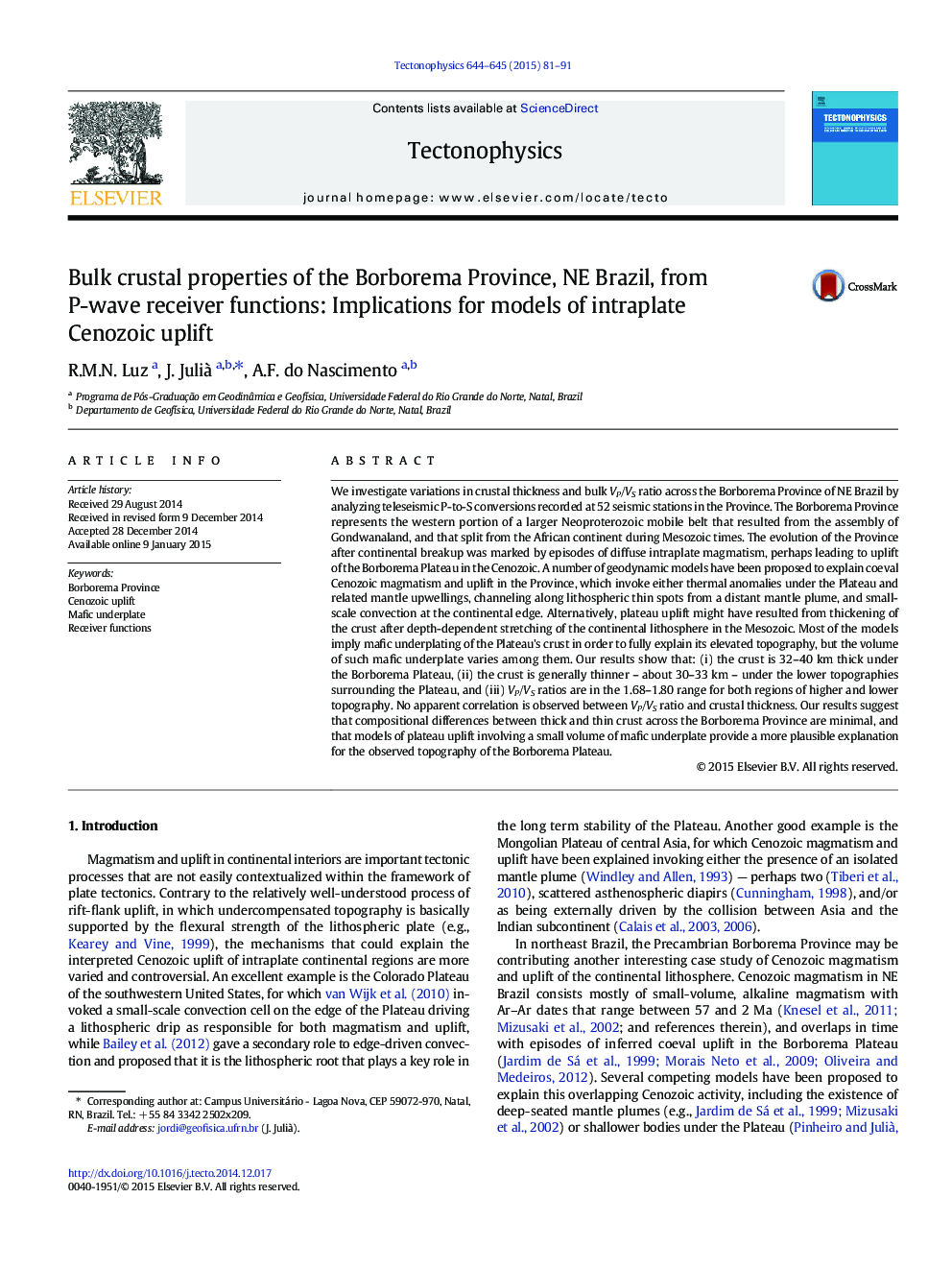| Article ID | Journal | Published Year | Pages | File Type |
|---|---|---|---|---|
| 4691744 | Tectonophysics | 2015 | 11 Pages |
•We investigate models of Cenozoic intraplate uplift for the Borborema Province.•We develop 52 point estimates of crustal thickness and bulk VP/VS ratio.•Crustal thickness closely correlates with topography but not with VP/VS ratio.•Bulk VP/VS ratios cannot resolve a thin layer of mafic underplate.•We favor models with minimal mafic underplating of the Borborema Plateau.
We investigate variations in crustal thickness and bulk VP/VS ratio across the Borborema Province of NE Brazil by analyzing teleseismic P-to-S conversions recorded at 52 seismic stations in the Province. The Borborema Province represents the western portion of a larger Neoproterozoic mobile belt that resulted from the assembly of Gondwanaland, and that split from the African continent during Mesozoic times. The evolution of the Province after continental breakup was marked by episodes of diffuse intraplate magmatism, perhaps leading to uplift of the Borborema Plateau in the Cenozoic. A number of geodynamic models have been proposed to explain coeval Cenozoic magmatism and uplift in the Province, which invoke either thermal anomalies under the Plateau and related mantle upwellings, channeling along lithospheric thin spots from a distant mantle plume, and small-scale convection at the continental edge. Alternatively, plateau uplift might have resulted from thickening of the crust after depth-dependent stretching of the continental lithosphere in the Mesozoic. Most of the models imply mafic underplating of the Plateau's crust in order to fully explain its elevated topography, but the volume of such mafic underplate varies among them. Our results show that: (i) the crust is 32–40 km thick under the Borborema Plateau, (ii) the crust is generally thinner – about 30–33 km – under the lower topographies surrounding the Plateau, and (iii) VP/VS ratios are in the 1.68–1.80 range for both regions of higher and lower topography. No apparent correlation is observed between VP/VS ratio and crustal thickness. Our results suggest that compositional differences between thick and thin crust across the Borborema Province are minimal, and that models of plateau uplift involving a small volume of mafic underplate provide a more plausible explanation for the observed topography of the Borborema Plateau.
